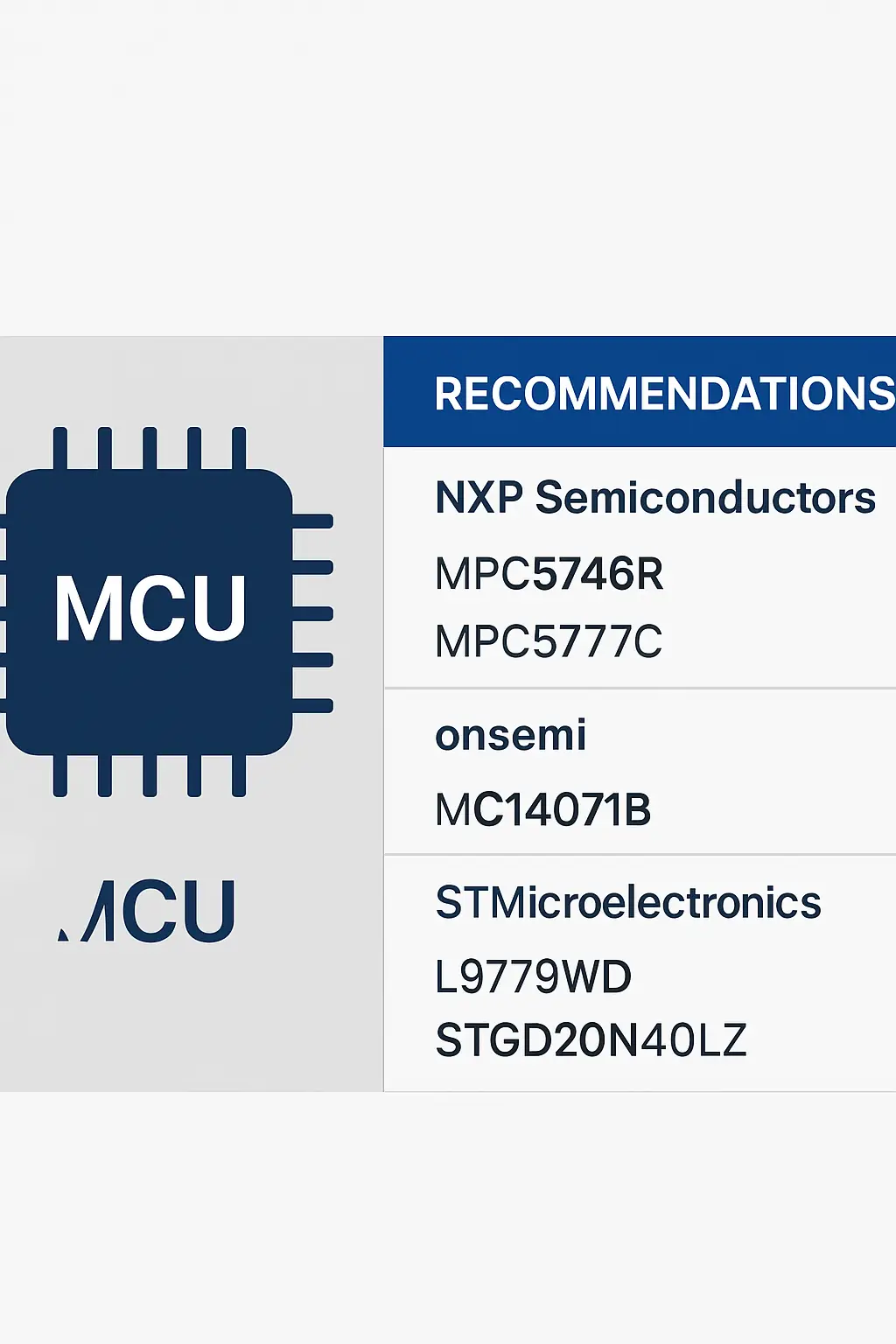MCU
The Automotive Electronics system is a critical component in modern vehicles, responsible for managing and controlling various functions to ensure optimal performance, safety, and efficiency. Within this domain, Powertrain & ICE Management plays a vital role in monitoring and regulating the internal combustion engine (ICE) and related systems. At the heart of this management system are Engine Control Units (ECU), which act as the central processing unit for engine operations. These ECUs are equipped with Microcontroller Units (MCU) that process real-time data from sensors and execute control strategies to enhance engine performance, fuel efficiency, and emissions compliance.
ECUs are essential in managing key engine functions such as fuel injection, ignition timing, air-fuel ratio, and emission control. They continuously analyze input signals from various sensors, including throttle position, oxygen levels, and engine temperature, to adjust engine parameters accordingly. The MCU within the ECU ensures fast and accurate processing, enabling precise control under different driving conditions.
These systems are widely used in passenger cars, commercial vehicles, and hybrid electric vehicles, supporting both traditional ICE and advanced powertrain technologies. As automotive technology evolves, the role of ECU and MCU continues to expand, integrating with other vehicle systems such as transmission control, battery management, and driver assistance features. This integration enhances overall vehicle performance, reliability, and driver experience.
In summary, the Automotive Electronics system, particularly through Powertrain & ICE Management, Engine Control Units, and MCUs, ensures efficient and safe operation of modern vehicles, adapting to the increasing demands of performance, sustainability, and smart mobility.
Details
MCU

Related Parts
| Series Name | Description | Manufacturer Name | Attribute Description |
|---|---|---|---|
| NXP Semiconductors | 32-bit Power Architecture core, 240 MHz, 2.5 MB flash, 324 KB RAM, 12-channel e200z425 CPU, supports automotive applications with ASIL-D safety compliance, -40°C to 150°C operating temperature. | ||
| NXP Semiconductors | 32-bit Power Architecture core, 600 MHz, 4 MB flash, 512 KB RAM, 12-channel eTPU, 24-bit eMIOS, 12-bit ADC, supports automotive networking (FlexRay, CAN-FD). | ||
| onsemi | Quad 2-input OR gate, 3–15V supply, high noise immunity, TTL-compatible inputs, low power CMOS, max propagation delay 60ns at 5V, operating temperature -55°C to 125°C. | ||
| STMicroelectronics | 32-bit ARM® Cortex®-M0+ core, up to 80 MHz, 128 KB Flash, 20 KB RAM, 5× PWM, 4× SPI, 2× I2C, 1× UART, 16-bit ADC, 12-channel DMA, -40°C to 125°C. | ||
| STMicroelectronics | 20A, 400V, N-channel STripFET V LDMOS, 0.11Ω RDS(on), 200mJ EAS, TO-220/TO-263 package, fast switching, suitable for SMPS and motor control. | ||
| STMicroelectronics | 4-channel high-side driver, 5V supply, 0.4A max current per channel, 12V to 60V output voltage, integrated diagnostics, SPI interface, thermal shutdown, overcurrent protection, suitable for industrial and automotive applications. | ||
| STMicroelectronics | 600V, 16A, high-efficiency thyristor; TO-220 package; 50A I²t rating; 1.6V max V_T; 30mA max I_GT; suitable for high-voltage switching applications. | ||
| STMicroelectronics | Dual H-bridge driver, 4.5V–48V supply, up to 750mA output current, integrated PWM control, thermal shutdown, overcurrent protection, 16-pin SO package. |








.png?x-oss-process=image/format,webp/resize,h_32)










